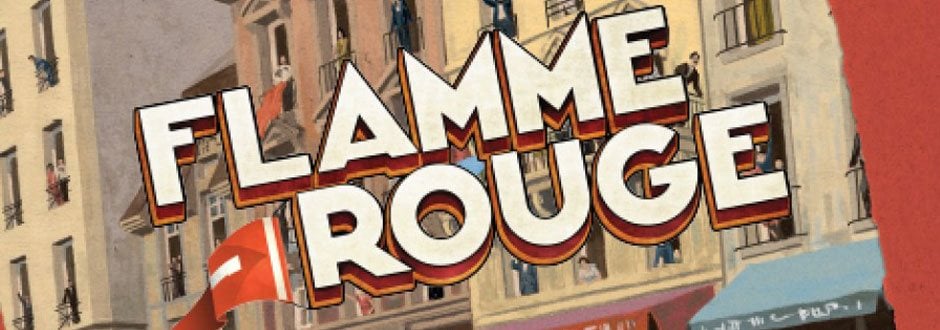Within my game group we have had some great times with board games based on racing. GMT’s Thunder Alley and Grand Prix being at the more complex end of the scale, with Snow Tails and Formula D being at the more accessible end. Due to this I tracked down the recent reprint of Flamme Rouge, a game based on bike racing, being totally different from any other games we own I wanted to see if it could hold its own against games we love.
Flamme Rouge - The Game
I am by no means at all interested in bike racing (I can’t even ride a bike!) but as a fan of board games I felt like the theme could be put to the side and I could just enjoy the mechanics of Flamme Rouge.
The box art is very nice and upon opening it I was surprised and the quality of the track pieces. The track is like a jigsaw and there are numerous ways to put them together, which gives added replay-ability. Each team of racers (two riders per team) have a deck of cards for each rider and these determine how far you will move each turn.
Each rider has a term (Rouleur and Sprinter) but I quickly adopted ‘sitting down’ and ‘standing up’ as the terms meant nothing to me.
In Flamme Rouge the idea is for each team to play cards from your rider’s decks and race along the track to become the first to cross the finish line. When cards are used they are out the game for good so tactical use of higher number cards is essential.
If your rider finishes on the track and there is a gap between them and the rider in front then you will draw an exhaustion card. This card will be placed into your deck and with its low movement value will limit your movement later in the game.
Set-up & Turn Order
Set up in Flamme Rouge is simple. The box contains simple to follow track cards that are all lettered, as are the tracks. Follow these and your track will be ready in a matter of minutes. You then deal out the cards for each team and place them on the appropriate place on each player board.
Each player then paces his riders behind the start line and once done you are ready to go.
The turn order is also simple and contains only three phases:
- Energy Phase - Here everyone draws four cards and chooses one to use. You do this for each rider and everyone does this action simultaneously. The cards not selected are placed face up at the bottom of the corresponding deck and when reached these are shuffled and form a new deck.
- Movement Phase - In this phase the person who is first (if tied the person on the right lane gets the advantage) shows the card that has been selected and moves the rider that number of places. This is then continued from the front to the back of the riders.
- End Phase - This is where played cards are removed from the game. If your rider only has one space in between it and the rider in front then slipstream is applied and you move forward to catch them up. Also any rider that has space in front of them at the end of this phase you draw an exhaustion card and place it in that riders deck.
That’s it, a quick set up and easy to follow rules makes this game easy to learn and it's one that I enjoyed playing.
Final Thoughts On Flamme Rouge
As I said above I have no knowledge or interest in bike racing and I was a little worried that the theme would come across bland to me, I was mistaken. The quick setup and easy to follow rules make you understand the theme and how the riders need to work together as a team. Using high cards on one rider and a low card on another leaves a gap, making slipstream impossible and you soon fall behind, so hand management is necessary to succeed in this game.
The playtime is quick enough to keep you interested and even though the player interaction is minimal the slipstream mechanic does add some to the game. Watching where the other riders are and what cards they have used is a great way to plan your next moves.
Flamme Rouge is very easy to learn and I played it with my daughter who struggles with rules and she nearly beat me. However the track pieces are double sided and the inclusion of hills restrict your movement on particular sections adding an extra layer of tactical card play to the game. One thing I did struggle with was that all the cards are very difficult to differentiate as they all look so similar. The box could do with a decent insert too as the one it has, cardboard, is very poor.
In the end everyone who has played this game has enjoyed it. Flamme Rouge is a game I hope to get to the table often as its very fun and easy to teach with added depth that can be included if needed. I would say this sits in between the games I mentioned above and has a place in my collection.
I have been told there is an expansion coming out soon and I would very much like to see what that adds to an already great game.
This blog was originally published on July 3rd, 2017. Updated on May 11th, 2022 to improve the information available.









Share